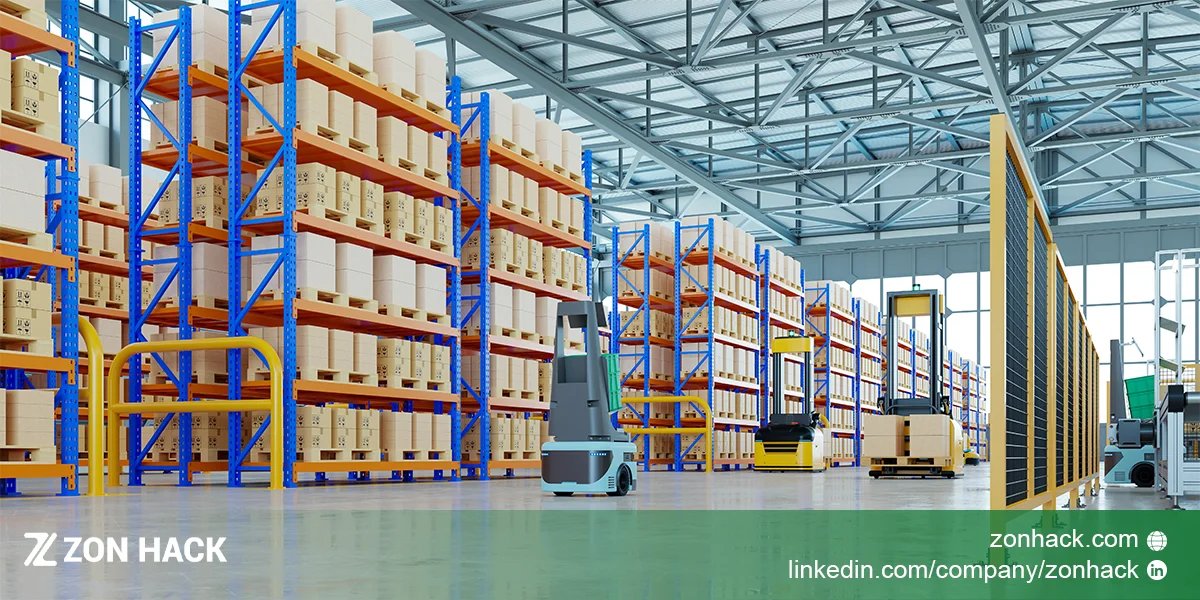With a market share of around 37.8%, Amazon dominates the eCommerce sector (Source: Statista). The efficient shipping service offered by the eCommerce giant through Amazon FBA is largely responsible for its success. As a point of reference, Amazon receives around 70% of orders from customers (especially Prime members) due to its fast and free delivery.
Amazon has a variety of warehouse types throughout its logistics network to guarantee that its delivery service is as quick and agile as possible. Around 1,000 to 1,500 people are employed at each of the Amazon fulfillment and distribution centers and 250,000 employees globally.
We will explore different delivery structures that enable Amazon to offer excellent delivery services consistently if you have been curious about how they do it.
Different Types of Amazon Warehouses
- Fulfillment & Distribution Centers
- Sortation Centers
- Receiving Centers
- Delivery Stations
- Amazon Fresh Warehouses
- Specialty Centers
Fulfillment & Distribution Centers (FBA)
Warehouses known as fulfillment centers are where FBA sellers can send their inventory. Amazon stores and ships the products that are sent to fulfillment centers.
According to Amazon, over 175 fulfillment centers are currently operating across the world. North America has the highest concentration of these warehouses, where over 110 are situated.
The fulfillment center warehouses have total area footage of about 150 million square feet, with sizes ranging from 600,000 to one million square feet.
An Amazon fulfillment center includes every physical step of an Amazon delivery, from receiving inventory from manufacturers to packages being shipped out directly to buyers.
Sortation Centers
Sortation centers, also known as sort centers, are short-term intermediary storage for outgoing shipments. Associates prepare shipments for last-mile delivery by the US Postal Service (USPS) at an Amazon sortation facility.
In order to assist Amazon in offering Sunday delivery to customers, these sortation facilities were initially developed in partnership with the USPS. Currently, Amazon operates sortation facilities in at least 27 different states across the U.S., with Texas and California having the most with 4 each.
Amazon Fulfillment Center vs Sortation Center
It is not always easy to figure out the differences between fulfillment centers and sortation centers. But to assist in making it more understandable, below is a quick contrast of a sortation center and a fulfillment center.
| Fulfillment Centers | Sortation Centers |
| Large warehouses where storage, packing, order fulfillment, and other end-to-end delivery operations are carried out. | Smaller in size and takes care of last-mile sorting and delivery procedures. |
| Serving as vital hubs or warehouses for quick and efficient shipping, they are positioned in crucial areas across the country or worldwide. | To facilitate efficient sorting and routing of shipments prior to final delivery, often located nearby fulfillment centers. |
| They manage the whole order processing, which results in quicker shipping times for customers, directly impacting delivery speed. | Streamlining package routing and cutting down on shipping times through efficient logistics indirectly impact delivery speed. |
| Ensure prompt and accurate order fulfillment to improve the customer experience and increase customer satisfaction. | Reduce shipping errors and enhance package routing to improve the delivery process. |
Receiving Centers
Large orders of items that sell quickly are sent to Amazon receiving centers, which serve as a supplement to their fulfillment and distribution facilities. The main fulfillment centers receive these large volume products as needed after that.
Delivery Stations
Amazon’s delivery stations, which act as important hubs in the delivery process are supplied by fulfillment centers. Here, customer orders are prepared for doorstep delivery, which is the final stage in the delivery procedure.
Amazon Fresh Warehouses
An Amazon Fresh warehouse can be separate or located within one of their other warehouses. A Fresh warehouse is organized with sections and aisles just like a grocery store, where members of the picker and warehouse assistance teams “go shopping” to fulfill customer orders.
Specialty Centers
Amazon’s fulfillment network is also supported by additional types of Specialty Centers that handle specific categories of products or are pressed into service at peak times of the year, such as the holiday season.
Conclusion
Quote from Amazon: “Why do we have all of these different buildings? We see the continued demand from customers for low prices and great selection, and we build capacity to support that demand.”
Understanding the different order fulfillment systems that Amazon has established makes it easy to determine what you must set up if you ever decide to handle your own logistics or operate an independent website.
Hopefully, this article helped to understand various Amazon warehouses and delivery structures. If you have any questions, then let us know in the comments below!




